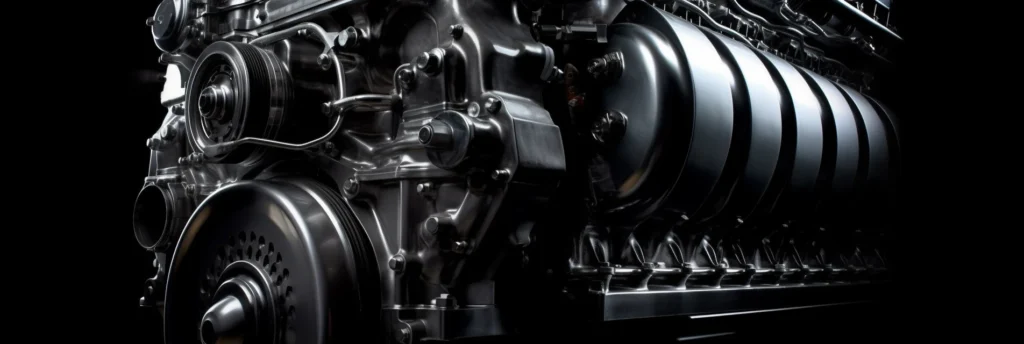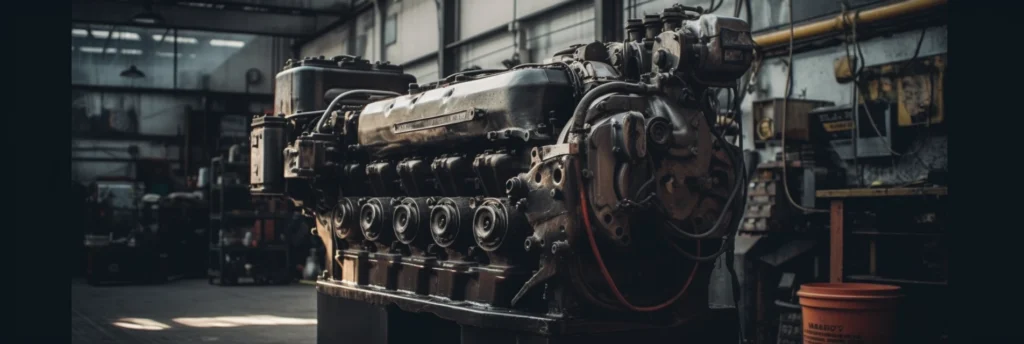Truck Maintenance
Are you a truck owner or a fleet manager trying to keep your entire fleet of semi trucks running smoothly? If so, it’s crucial to understand the importance of semi truck maintenance and how to keep these powerful machines in top condition.
In this article, we’ll explore the different types of maintenance, key components and systems to check, regular preventive maintenance checklist and tasks, advanced maintenance techniques, and more. Let’s get started!
Importance of Semi Truck Maintenance
Semi truck maintenance is essential for several reasons. It ensures the safety of the truck driver, and others on the road, minimizes downtime, prevents costly repairs, and extends the life of the truck. Additionally, a well-maintained truck consumes less fuel and emits fewer pollutants, thus reducing the environmental impact.

Types of Maintenance
There are three primary types of semi truck maintenance:
Preventative Maintenance
Preventative maintenance involves regularly scheduled inspections, adjustments, and replacements aimed at preventing problems before they occur. This type of preventative maintenance schedule is essential for detecting wear and tear, ensuring the truck remains in good working condition, and avoiding costly repairs down the line.
For a guide on truck painting press here.
Corrective Maintenance
Corrective maintenance refers to the repair or replacement of parts that have already failed or become worn out. This type of preventative maintenance is necessary for keeping the truck operational and preventing further damage to other components.
Predictive Maintenance
Predictive fleet maintenance also uses advanced technologies, such as sensors and data analysis, to monitor the truck’s performance and predict when a component is likely to fail. By addressing potential issues before they become critical, this approach minimizes downtime and reduces maintenance costs.

Key Components and Systems to Check
Several key components and systems require regular inspection and maintenance:
Engine and Transmission
The engine and transmission are the heart and soul of your semi truck. Regularly check the engine oil pressure, and coolant levels, and look for any signs of any fluid leaks or damage. Additionally, monitor the engine’s performance and pay attention to any unusual noises or vibrations.
Braking System
A well properly maintained and functioning braking and air pressure system is crucial for the safety of the driver and other road users. Inspect the brake pads, rotors, and calipers for wear and tear, and ensure that the brake fluid is at the appropriate level. Additionally, check the air brake system for leaks and make sure the front air conditioning compressor is working correctly.
Suspension System
The suspension system plays a significant role in the comfort and stability of the truck. Regularly inspect pressure test the shock absorbers, springs, and bushings for wear or damage, and check the alignment of the axles and wheels.
Electrical System
A truck’s electrical system powers essential components, such as the lights, starter motor, and alternator. Check the battery for corrosion and ensure it’s securely mounted. Inspect all wiring, connectors, and fuses for damage or wear, and verify that all lights are functioning correctly.
For a guide on jump starting your truck press here.
Tires and Wheels
Tires and wheels are crucial for both safety and fuel efficiency. Regularly check the tire for air pressure throughout, tread depth, and overall condition. Inspect the wheels for damage or cracks, and ensure that all lug nuts are properly tightened.

Routine Maintenance Tasks
There are several maintenance tasks you should perform regularly to keep drum brakes on your semi truck in top condition:
Oil and Filter Changes
Regular oil and filter changes are vital for maintaining the engine’s performance and extending its life. Consult your truck’s owner’s manual for the recommended oil change intervals and follow them diligently.
Checking and Replacing Belts and Hoses
Belts and hoses play a crucial role in the proper functioning of the engine, transmission system steering, and other systems. Regularly inspect them for signs of wear or damage and replace them as needed to prevent breakdowns.
Cleaning and Inspecting the Air Filter
A clean air filter ensures optimal engine performance and fuel efficiency. Inspect and clean the air filter regularly, and replace it when necessary also looking after fuel filter and the cooling system is a must.
Greasing Moving Parts
Greasing moving parts, such as the transmission mounts drive shafts, U-joints, and kingpins, helps reduce friction and wear, prolonging the life of these components. Apply grease according to the manufacturer’s recommendations.

Advanced Maintenance Techniques
In addition to regular maintenance thorough inspection tasks, there are some advanced techniques that can help keep your semi truck in peak condition:
Alignments and Balancing
Proper wheel alignment and balancing ensure a smooth ride, even tire wear, and improved fuel efficiency. Have your truck’s wheels aligned and balanced by a professional at regular intervals.
Tire Retreading
Tire retreading is an economical and environmentally friendly way to extend the life of your truck’s tires. Retreaded tires can provide similar performance and safety levels as new tires at a fraction of the cost.
Diagnostic Scanning
Modern semi trucks are equipped with advanced onboard diagnostic systems that can alert you to potential issues. Regular diagnostic scanning can help you identify problems early and address them before they become serious.

Maintenance Schedules and Record Keeping
Establishing a full maintenance program and schedule and keeping detailed records of all maintenance activities are essential for ensuring the longevity and reliability of your semi truck. A well-organized service station, maintenance program and log can also be invaluable when it comes to selling your truck or complying with regulatory requirements.
Also training drivers to perform good pre trip inspection procedures and post trip inspections, will further decrease your chances for breakdowns on the road. Maintenance schedule is a must for all fleets in commercial trucking industry. Minor repairs also need to be tracked as they may add up to have large costs for fleet managers.

Hiring a Maintenance Professional vs. DIY
While many truck owners opt to perform basic maintenance tasks themselves, hiring a professional mechanic can be a wise investment. A skilled technician can spot potential problems that might be overlooked by an inexperienced eye and provide valuable advice on how to keep your truck running smoothly.

Semi Truck Maintenance Checklist
Here is a full semi truck maintenance checklist that should be checked off as a routine maintenance for commercial trucks and motor vehicles.
Engine and Transmission
Check oil pressure levels and change oil as per manufacturer’s recommendations
Check coolant levels and top off as needed
Inspect belts and hoses for wear or damage
Look for signs of leaks or damage
Monitor engine performance and listen for unusual noises or vibrations
Braking System
Inspect brake pads, rotors, and calipers for wear or damage
Check brake fluid levels and replace as needed
Inspect air brake system for leaks
Verify proper functioning of the air compressor
Suspension System
Inspect shock absorbers, springs, and bushings for wear or damage
Check alignment of axles and wheels
Lubricate suspension components as needed
Electrical System
Inspect battery for corrosion and secure mounting
Check wiring, connectors, and fuses for damage or wear
Verify proper functioning of all lights, including headlights, taillights, and turn signals
Tires and Wheels
Check tire pressure and adjust as needed
Inspect tire tread depth and overall condition
Examine wheels for damage or cracks
Ensure lug nuts are properly tightened
Regular Maintenance Tasks
Change oil and oil filter as per manufacturer’s recommendations
Inspect and replace belts and hoses as needed
Clean and inspect the air filter; replace when necessary
Grease moving parts, such as the drive shaft, U-joints, and kingpins, according to the manufacturer’s recommendations
Advanced Maintenance Techniques
Schedule professional wheel alignments and balancing
Consider tire retreading to extend the life of tires
Perform diagnostic scanning to identify potential issues
Maintenance Records and Scheduling
Establish and follow a maintenance schedule based on the truck’s age, mileage, and usage
Keep detailed records of all maintenance activities, including dates, services performed, and parts replaced

Most Common Faults in a Truck
Some parts from a semi truck maintenance checklist are more prone to wear and tear or failure than others. Being aware of these common faulty parts can help you stay vigilant and address any issues as soon as they arise.
Turbochargers: Turbochargers boost engine performance by forcing more air into the combustion chamber. Over time, they can become worn or damaged due to high operating temperatures and pressure. Signs of a faulty turbocharger include loss of power, poor acceleration, and excessive exhaust smoke.
EGR (Exhaust Gas Recirculation) Valves: The EGR valve helps reduce harmful emissions by recirculating a portion of the exhaust gas back into the engine. EGR valves can become clogged or stuck, leading to decreased engine performance and increased emissions. Regular cleaning and inspection can help prevent EGR valve issues.
Diesel Particulate Filters (DPFs): DPFs capture and store soot particles from the exhaust, reducing emissions. Over time, they can become clogged, leading to reduced engine performance and potential damage to other components. Regularly scheduled regenerations or cleanings can help keep the DPF in optimal condition.
Fuel Injectors: Fuel injectors deliver fuel to the engine’s combustion chamber. Over time, they can become clogged or worn, leading to poor engine performance, increased fuel consumption, and rough idling. Regular fuel system cleanings and injector inspections can help prevent these issues.
Alternators: The alternator is responsible for charging the battery and powering the truck’s electrical system. A failing alternator can cause issues such as dimming lights, difficulty starting the truck, or a dead battery. Regularly inspect the alternator for wear or damage, and replace it as needed.
Suspension System Tires Wheels: The suspension system in semi trucks plays a critical role in providing a smooth and stable ride, ensuring the safety of the driver, cargo, and other road users. It also helps to protect the truck’s components from excessive wear and tear caused by road vibrations and impacts. This section will provide an overview of the suspension system in semi trucks and the importance of regular maintenance.
Starter Motors: The starter motor is responsible for turning the engine over during the ignition process. A faulty starter can cause issues such as slow cranking or a failure to start. Inspect the starter motor for wear or damage, and replace it if necessary.
Water Pumps: The water pump is responsible for circulating coolant through the engine to maintain optimal operating temperatures. A failing water pump can lead to overheating, which can cause severe engine damage. Inspect the water pump for leaks or damage and replace it as needed.
By staying vigilant and getting truck drivers to regularly inspecting these common faulty parts in your semi trucks, you can help prevent breakdowns, maintain optimal performance, and extend the life of your vehicle. Remember that preventive maintenance is key to keeping your truck running smoothly and minimizing costly repairs.

Conclusion
Regular semi truck maintenance is crucial for ensuring the safety, reliability, and longevity of your truck. By staying on top of preventative, corrective, and predictive maintenance tasks, you can minimize downtime, reduce repair costs, and keep your truck operating at peak performance. Whether you choose to perform maintenance tasks yourself or hire a professional, maintaining a well-organized maintenance schedule and record-keeping system is essential for staying on track and complying with federal regulations throughout.

COmmon Questions
How often should I perform preventative maintenance on my semi trucks?
The frequency of preventative maintenance depends on factors such as the truck’s age, mileage, and usage. Consult your owner’s manual for the manufacturer’s recommendations, and adjust the intervals based on your specific situation.
How can I improve my semi truck’s diesel engine oil, fuel and efficiency through maintenance?
Regular maintenance tasks, such as oil and filter changes, tire pressure checks, and air filter inspections, can help improve fuel efficiency. Additionally, ensure your truck’s wheels are properly aligned and balanced, and consider using low-rolling-resistance tires.
How do I know when it’s time to replace a part on my semi trucks?
Signs that a part may need replacing include unusual noises, vibrations, or decreased performance. Regular inspections and preventive maintenance can help you identify worn or damaged parts before they cause significant problems.
How can I tell if my semi truck’s tires need retreading?
If your truck’s tires have worn down to the minimum tread depth but are still structurally sound, they may be candidates for retreading. Consult a tire professional for an assessment and recommendations.
How do I find a reliable mechanic for my semi trucks?
Look for mechanics who specialize in heavy-duty trucks and have a solid reputation for quality work. Ask for recommendations from fellow truck owners, check online reviews, and inquire about the mechanic’s certifications and experience.







